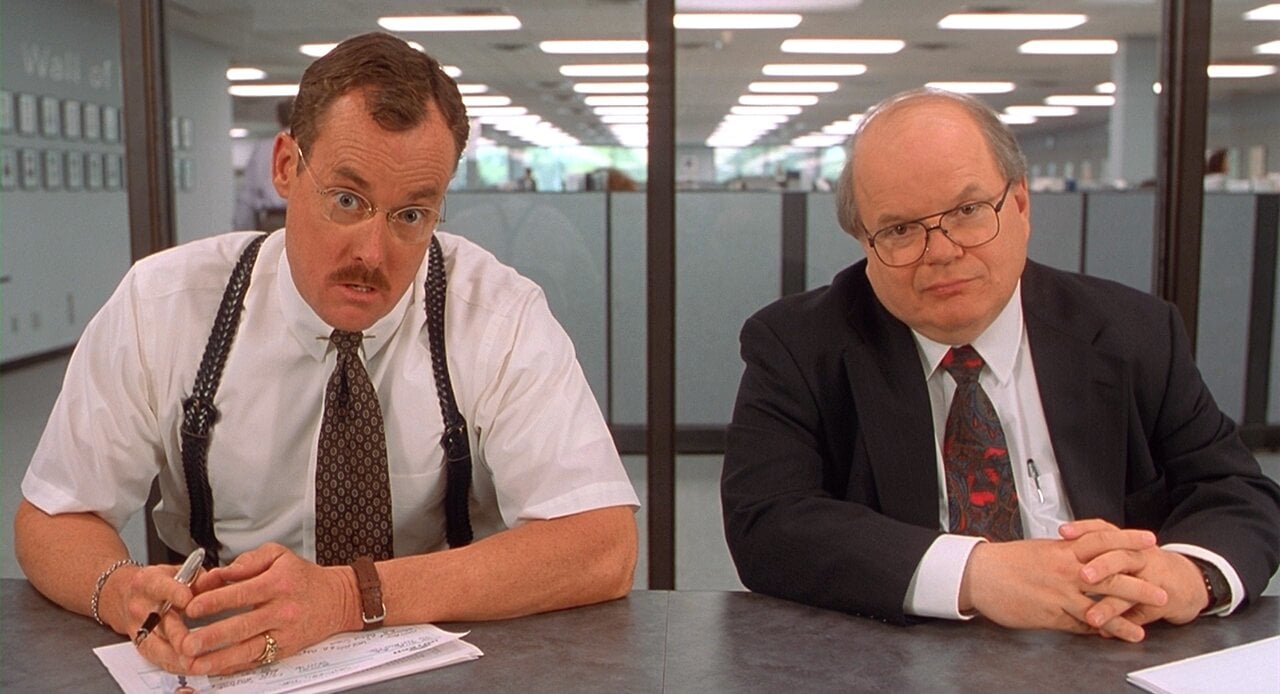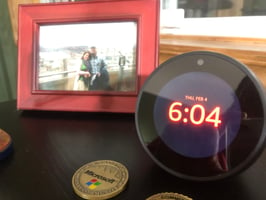5 Things You Can Do Today to Make Time for Your Career Pivot

This past year (2020) has been a doozy. Our worlds have been completely shaken up, our values solidified, and some things we once thought were important no longer are.
You may be entering the new year contemplating a career pivot or making the leap toward starting a business.
However, unless you have a sizeable amount of cash stashed aside that you don’t mind losing early on, it’s not a good idea to quit your day job and jump into your new endeavor with both feet.
That means adding more time and work on top of what you’re already doing.
For many people, this is something they’re unwilling to do. It’s incredible how many people want to change their lives or careers but don’t want to make sacrifices or put in the hard work required to succeed. This is actually an advantage to you. The fastest path to success is to do something others are unwilling to do.
A successful business or career pivot doesn’t just happen out of thin air. It takes work and, most importantly, time and patience.
Most of us only see the end results of someone’s successful business venture they started. We never know the time and work it actually took to get to the point you’re seeing now.
We never know about the doubt that the person had on an almost daily basis.
The self-questioning of why they’re the one to do what they’re doing.
We never know the failures and the many times they were knocked down and seemingly out.
I’ll just share a brief story about my 2020 to give you a glimpse of what’s possible.
I’m currently the Director of Marketing for a B2B company based in Denver, CO. I manage a team of five people plus two consultants. I am responsible for developing and executing our marketing strategy.
During this past year, I also managed to participate in numerous workshops and learning engagements. I also wrote a 200-page book on recruitment marketing on top of a podcast and a blog that I publish posts to at least once per week.
Not to mention, my wife and I welcomed another son into the world in April to go along with the 2-year old we also have.
I commit to being done with my work – all of my work – including writing, workshops, and my job - by no later than 4 PM each day.
Most of my workdays are filled with meetings, especially since I manage a marketing team remotely – not because of COVID but because I live in Spokane, WA, and my team is in Denver.
How the hell do I manage to do all of this, you’re probably wondering.
Here are five things I do to make this happen while not taking away from what’s most important to me- time with my family or my ‘day job.’
Make Time
Make time. That seems like such a strange thing to say, given that we all have 24 hours in a day, and we can’t actually make time.
But that’s just the thing. That’s the constraint that every other human on the planet has to contend with. Yet, some are incredibly successful and able to accomplish a lot more than others.
How is that possible?
I can’t speak for how others spend their time. However, this may be an interesting thing to research and write about, but I can tell you how I make the time each day, and you probably aren’t going to like it.
I wake up and am at my desk every morning (including weekends) by 4:30 AM. Not everyone is an early riser. I’ve always gotten up early, but never as early as I do now.
When I tried to carve out time in the evenings, it was always getting interrupted or, worse, would never happen because something else would come up.
Why? Because other people are awake then and when other people are awake, there’s always the potential that they’ll need something or want to do something.
I had to make myself get up early if I was going to be consistent and create a habit of getting my work done each day.
Not to mention, it feels terrific mentally to know that you’ve been able to get what you’ve needed to get done, to have made daily progress toward your goals. You can focus your attention on other things for the rest of the day.
There’s no anxiety or fear that something will come up and prevent you from getting what you need to get done. You can relax and enjoy the rest of your day, being present in everything else you’re working on or doing.
This, to me, is the most critical of all of the things I do.
Have a Plan
Before you can do anything else, you need to know what you want to accomplish each month, week, and day.
You’ve carved out the time each day, but now what? You need to make the most of that time. Otherwise, you won’t find it productive. You will likely go back to your old ways of sleeping in or doing something else with your evenings.
I’ll tell you from experience that it’s hard to bounce from one thing to another, but not impossible. Some days, that’s what you’ll have to do.
For example, I may spend an hour writing my book and another hour on the workshop I’m taking or writing a blog post. When you do this, you need to be OK with stopping, even if you’re in the middle of something.
I’m about to do that now. I’m almost finished writing this blog post, but I need to get 30 minutes in on my Peloton. During my rides, I use what’s known as layering to watch videos for the current workshop I’m enrolled in, Dorie Clark’s Recognized Expert Workshop.
So, I’m stopping. Right now.
And…now I’m back—the next day.
It’s tempting to feel like you’re on a roll and keep doing what you’re doing, but sometimes it’s beneficial to cut things off and move on.
Organizational Psychologist and Wharton Professor, Adam Grant, does this on purpose. He will intentionally stop writing in the middle of an email reply or a book he’s working. “Complex tasks are often better handled in the back of our mind, and that’s often true for creative tasks,” Grant told Dorie Clark in an interview for a Forbes article she wrote.
Be Highly Efficient
Efficiency is something companies are continually striving for, and there’s no reason you shouldn’t strive for this too. Efficiency is the key to doing more in less time with fewer resources.
One thing that I do to become highly efficient is to layer some of the things I do. I’m not talking about multi-tasking. Multi-tasking is not effective and leads to mistakes and low quality.
I’m talking about layering a moderately high cognitive task, like watching a video or listening to something, with a low cognitive task like walking, running, or riding a stationary bike.
Obviously, it’s a bad idea to watch a video while simultaneously running, so common sense is also a prerequisite.
As I mentioned earlier, I’m enrolled in Dorie Clark’s Recognized Expert workshop. The majority of the workshop involves watching videos and recorded webinars, and there are about 2-3 hours of content to consume each week.
To do this and not take away from my writing time in the morning or family time in the evening, I typically watch them on my iPad while riding my Peloton. If I need to jot down notes, I have my phone in one of the water bottle holders and Evernote open and ready.
If I ride 30-45 minutes each day, that’s more than enough time to stay on track with the workshop.
Be Focused
When you’ve carved out the time in your day, you need to make the most of it.
To be highly efficient, it helps to also learn to be focused. Our world is filled with distractions – phones beep, buzz, and vibrate, email and other reminders pop up, Slack messages ding, and icons bounce in your dock.
It’s a barrage. No one can focus with that many distractions. So, I’ve turned them all off—all of them. The only things that are allowed to interrupt me are calendar reminders. However, I’ll even silence those if I know I don’t have anything for the time I’m engaged in focused work.
If you plan your day effectively, you’ll begin to realize that you really don’t have as much time as you thought you did. We’re notorious for underestimating how much we can accomplish in a year and overestimating how much we can get done in a day.
A lot of that has to do with our unrealistic understanding of how much time we actually have throughout the day.
You may see open spots between meetings on your calendar, but 15 minutes isn’t enough time to get anything done. In fact, it will likely take you 10 minutes just to settle in and begin to make any progress.
To make the most of my time, I’ll calculate how much time I have outside of meetings, then estimate how much time I’ll spend checking email and responding to Slack.
It turns out, I’m usually amazed at how little time I actually have to get things done.
That’s why being efficient is so critical.
To do this, I use what’s called the Pomodoro technique. It’s essentially blocking off time in 30-minute chunks and shutting down all distractions. During this time, you have 25 minutes of focused time to work on one task. If you get it done before the time is up, start working on the next task on your list.
When your timer goes off, get up and walk away from your desk for 5 minutes. Then start the process again – if you have another 30 minutes.
I’m writing this blog post using this technique.
If I have a lot to do, I’ll also slot different tasks into the Pomodoros and will switch, whether I finish it or not. Suppose I don’t finish this blog post in the remaining 5 minutes of my current Pomo. In that case, I’ll have to pick it up tomorrow because I plan to get some reading in this morning before my day starts.
Protect Your Time
Creating time blocks is excellent, but you have to protect that time.
If you don’t protect your time, other people will take it from you. Not in a malicious way. But, if you haven’t developed the skill of knowing when to say ‘no’ and protecting your time, then your days will go sideways on you, and you’ll either end up working late, not getting things done or worse, both.
One way to protect your time is to use a scheduling program that connects to your calendar. This provides people with your availability, allowing them to schedule a call or meeting with you by picking a time that you’re available. Using a tool like this saves so much time that would otherwise be spent in a back-and-forth email exchange.
The program I use is called Calendly.
But, the most important thing you can learn how to do to protect your time is how to say ‘no.’
Summary
The bottom line to making a pivot is to spend the time toward your new endeavor. It’s going to take time and lots of it. Increase your odds of success by being kind to yourself and ensuring that you have the time you need, given the time you have.
Make the most of each day and each hour.
I’ll leave you with a quote from Greg McKeown’s book Essentialism* that I have written out on a sticky note and pinned on the corkboard right above my MacBook. This is now my mantra and is the question I ask myself whenever I’m about to do something:
“Is this the most important thing I should be doing with my time and resources right now?”
A simple yet powerful reminder of the decision I have in front of me. Every day we’re faced with decisions. We have more control over our lives and futures than we think.
(By the way, I finished this post with 28 seconds to spare in my current Pomodoro.)
* I participate in the Amazon Affiliate program and receive a commission on books or products sold as a result of my content.
</div<></figure</div
-1.png?width=400&height=100&name=Website%20Logo%20-%20400x100%20(transparent%20background)-1.png)


